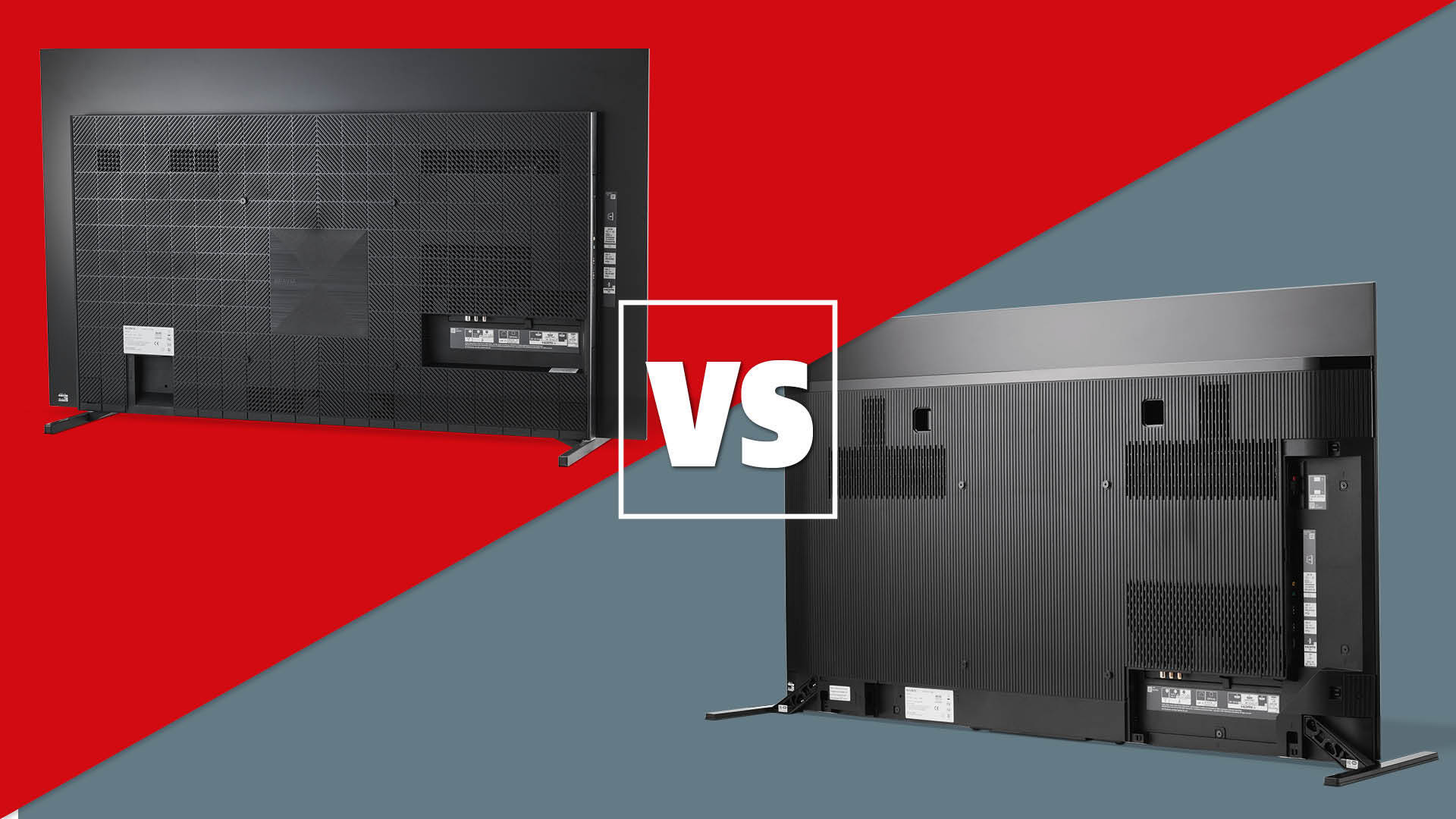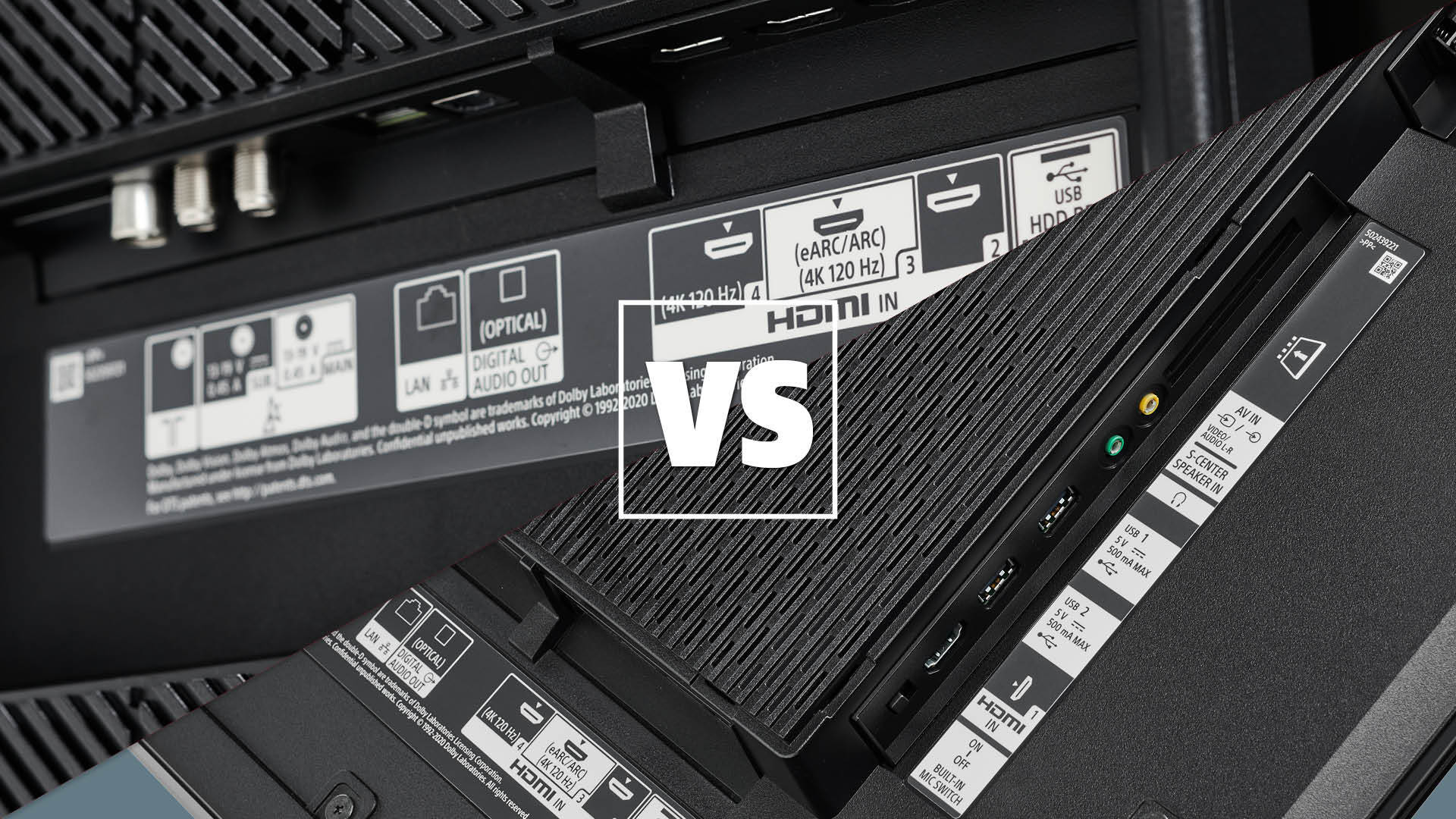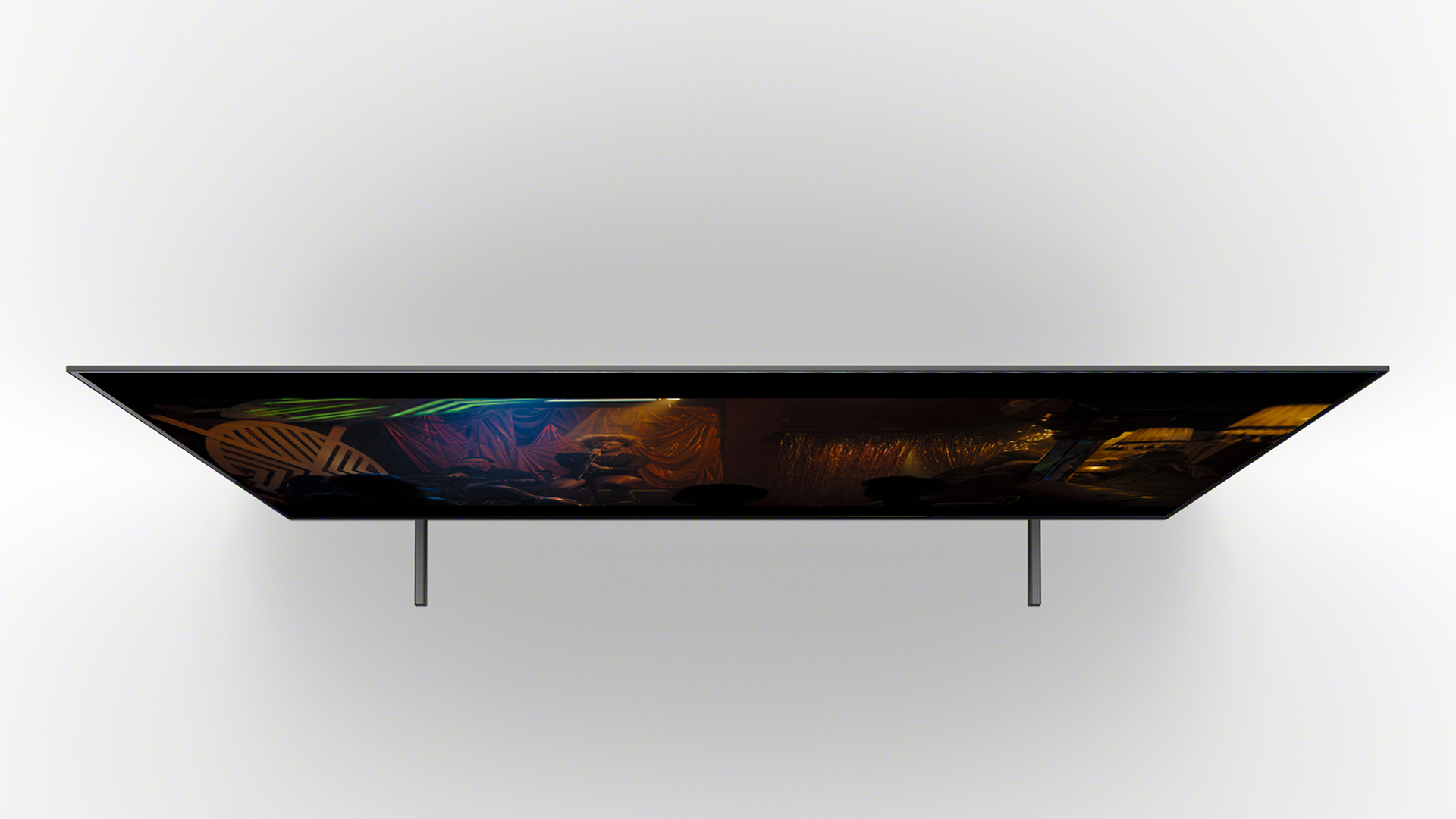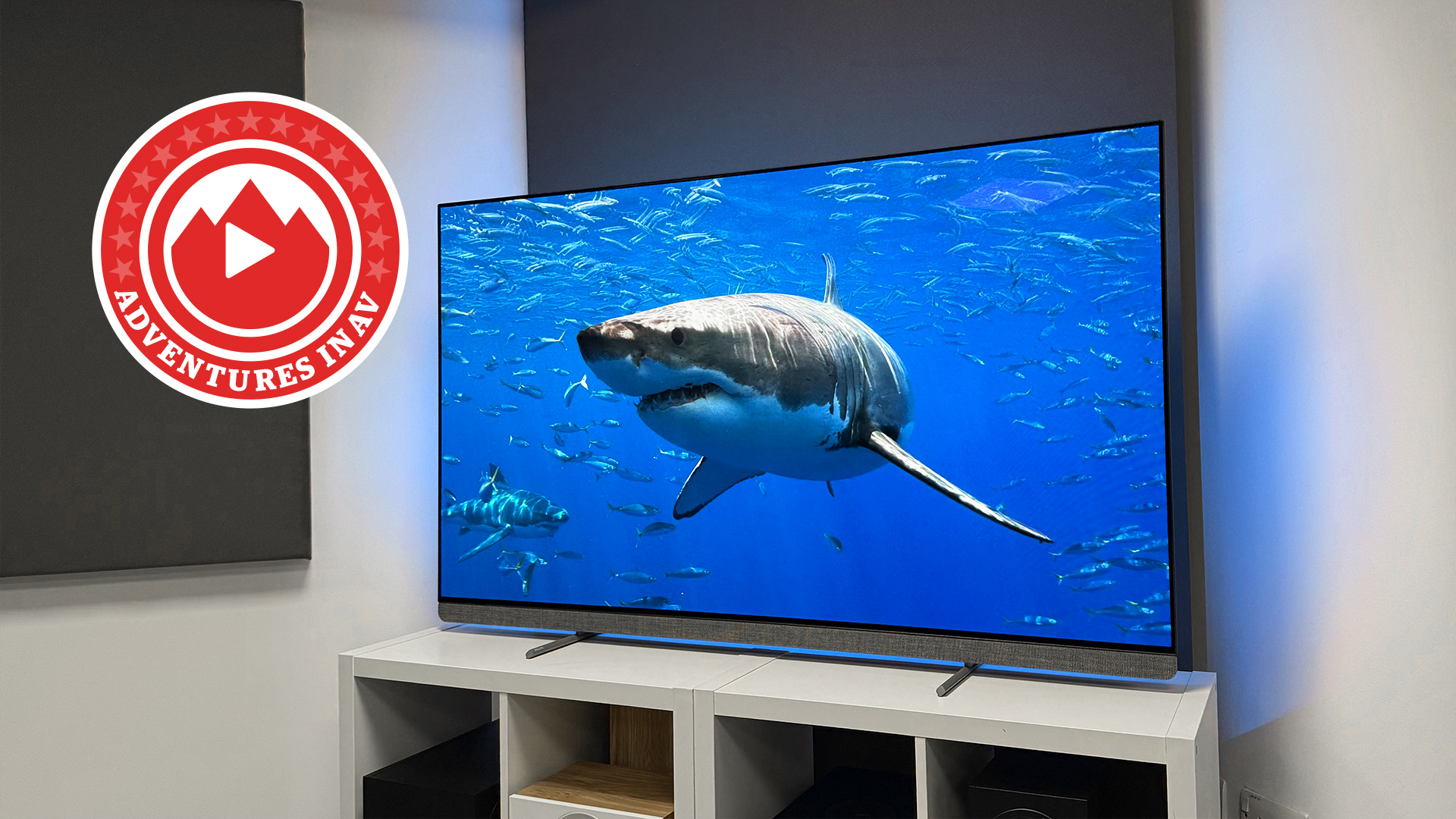Sony A90J vs A80J: which is the best 2021 Sony OLED TV?
There's a huge difference in price, but what about the performance?

2021 isn't over yet, but the outright 'best' TV of the year so far is, with very little doubt, the Sony A90J. The thing is, it's a mighty expensive TV that will be well out of the reach of most buyers.
For those people, Sony has produced the A80J, which shares much of its sibling's DNA but comes in at a much lower price (though it's still an undeniably premium TV).
Sony's made the buying decision really easy then, right? Buy the A90J if you can afford it and buy the A80J if you can't. Easy.
Actually, it's more complicated than that, so before you check your bank account and place your order, check out this in-depth comparison of the 55-inch versions of these two awesome OLED TVs. It could save you a lot of money...
Sony XR-55A90J vs XR-55A80J: price
The XR-55A90J is the pricier of Sony's two 2021 OLEDs, and by a large margin, coming in at £2699 ($2800). We don't have an Australian price, as it's currently not available there.
The XR-55A80J launched at £1899 ($2300, AU$2995), but it's already dropped to £1499 ($1700, AU$2795).
That makes the price difference between the A90J and the A80J a whopping £1200 ($1100) and the time of writing. That's no chump change.
The latest hi-fi, home cinema and tech news, reviews, buying advice and deals, direct to your inbox.
Both TVs are also available as 65-inch models and, perhaps unsurprisingly, the price difference is even larger at this size, coming in at £1300 ($1600, AU$1200).
If you're looking for an even bigger screen, the A90J is available as a ginormous 83-inch model, while the A80J maxes out at a still massive 77 inches. The price difference here is suitably huge, weighing in at £2800 ($3500, AU$3000).
Of course, prices do fluctuate, so keep a look out for deals. Big sales days such as Black Friday and Cyber Monday should be of particular interest, as they often see discounts on TVs. You'll find the latest, live prices of both TVs, in all sizes, in the box below.
**Winner** Sony XR-55A80J
At not far off half the price of its flagship sibling, the A80J easily wins this round.
Sony XR-55A90J vs XR-55A80J: design and build

The most striking visual element of the A90J is its feet. In their default position, they extend beyond the left and right edges of the set, leaving almost no gap between the bottom of the TV and the furniture upon which it’s standing. It’s a highly unusual, low-profile look (like a lowers supercar purring at the lights) but it's not exactly practical – in order to accommodate it, your TV cabinet will need to be at least 128cm (51 inches) wide. That's quite large indeed for a set of this size.
But that's not your only option. There's also a soundbar position – swap the feet over, and they angle inwards, giving the TV a smaller footprint of 115cm (45 inches), while also raising it about 7cm (2.8 inches), creating a space into which you can slot a soundbar.
The A80J, by comparison, is less immediately striking but a good bit more accommodating. Its feet are similarly dainty, and can be set in either a wide, narrow, or soundbar stance. When they’re in the narrow placement, the set has a footprint that’s a very reasonable 69cm (27.3 inches) wide – that will fit a much, ahem, wider assortment of TV cabinets.
Like most OLED TVs, both sets have extremely slim panels and much fatter sections housing the innards and connections. The A90J's pure panel section is just 6mm (0.2 inches) thick, while the part housing its guts juts out to 4.1cm (1.6 inches).
The A80J is similarly svelte at the panel, but it's a bit tubbier lower down, protruding out to 5.3cm (2.1 inches) thick. However, this section covers less of the TV's rear, as it starts lower down, so more of what you see from the sides is exceptionally thin.
Of course this doesn't mean much to most people – whoever stares at their TV side-on? – but it makes the A80J look slightly more like a floating panel when wall mounted than does its more premium A90J sibling.
Finally, both TVs bear the Sony logo, but on both it's very discrete, being positioned almost invisibly on the bottom-left lip of the set.
**Winner** Draw
When wall-mounted, these TVs look almost identical. On a stand, the the A90J is more striking but the A80J is more accommodating.
Sony XR-55A90J vs XR-55A80J: features

Now we get to the real meat of the comparison. What can these TVs actually do Quite a lot, as it turns out, and the two sets share more specs than you might expect.
Both have the same connections – comprising aerial, satellite (Freesat in the UK), ethernet and optical ports, plus three USBs and four HDMIs – but the A90J also has a pair of speaker terminals that let the TV act as the centre speaker in a surround sound system.
Of the four HDMI ports on both sets, only two are HDMI 2.1-spec, one of which also handles eARC/ARC – if you use this to get sound from the TV to an external sound system, you'll be left with just one HDMI 2.1 socket. While that won't be an issue for most people, it could frustrate hardcore gamers that have (or are planning to get) both a PlayStation 5 and Xbox Series X (and/or a high-end gaming PC).
Also bad for gamers is the fact that neither set supports VRR out of the box. This is apparently on its way to both via a firmware update, but no timeframe has been provided and Sony's track record on this sort of thing is less than stellar.
Both sets do, however, support 4K@120Hz, though it's far from a slick experience. Enable the feature and it will disable both ALLM (Auto Low Latency Mode) and Dolby Vision, and cause dropouts with Dolby Atmos sound. All of these work as expected when the TVs are switched to their Enhanced Format modes, which is limited to 60Hz. LG OLEDs such as the C1 force you to jump through no such hoops.
When it comes to movies and TV shows, however, there are some notable differences between the A90J and A80J.
Both boast Sony’s new Cognitive Processor XR, which combines the AI abilities of its X1 predecessor with a system that Sony calls cognitive intelligence. This aims to deliver a visual experience closer to how we humans see and perceive the world. But only the A90J features a beefed up OLED panel, courtesy of a new aluminium sheet that essentially acts as a heatsink, allowing for increased brightness. Sony hasn’t confirmed it, but the A90J is believed to uses the same next-gen ‘OLED Evo’ panel as the LG G1, which itself boasts higher brightness than OLED TVs before it.
On the audio front, both of Sony's 2021 OLEDs feature the company's Acoustic Surface Audio+ technology. This involves actuators that vibrate the whole screen, creating sound from the display itself – essentially the screen becomes the speaker. The advantage? Sound is mapped directly to the screen, so dialogue sounds as if it's coming straight from the character's mouth, for example. That makes for a more lifelike audio experience.
While the system works the same way in both sets, the A90J has twice as much power as the A80J. That's where your extra money is going – there and the fancy heatsink built into the OLED panel.
Google TV comes as standard on both TVs. It's a real step up from the Android TV found on older Sonys, but it's not without its niggles. For example, the personalised top row only includes recommendations from Disney+, Amazon Prime Video and Apple TV – not Netflix, as on the Google Chromecast with Google TV.
Some apps stream in 4K, Dolby Vision and Dolby Atmos and Spotify, Tidal, Amazon Music and Deezer give you plenty of options for music streaming. In the UK, there are native apps for Now (previously Now TV) and BT Sport but, at the time of writing, BBC iPlayer, ITV Hub and All 4 are missing from both sets. Sony promises they will be added, but it's been months since we first reviewed the A90J and they're still nowhere in sight.
Sony's own Bravia Core app is a tasty bonus, though. This exclusive streaming service offers blockbuster movies at data rates comparable to those of a 4K Blu-ray and vastly higher than those of other streaming services, and picture quality is therefore excellent. You'll need a minimum internet connect of 115Mbps, which is far out of the reach of many, but even at lower speeds it still delivers a wonderfully slick experience. Both sets include some tokens that can be used to 'buy' movies on Bravia Core, so you can give it a whirl without spending anything.
Finally, the remotes. While at first glance they might seem identical, the A80J's lacks the premium materials and natty backlight of its more expensive sibling. The buttons are also a bit spongy, and nowhere near as satisfying to press as those of the A90J's.
**Winner** Sony XR-55A90J
The A90J's heatsink-equipped OLED panel, more powerful audio system and better remote control give it the edge in terms of features over the A80J.
Sony XR-55A90J vs XR-55A80J: picture

Of course all this is academic if the TVs don't look any good. What use is a stacked feature set if the picture quality is sub-Ceefax?
Thankfully, that's not the case with either set. As you would expect, the high-end A90J is brimming with quality. Viewed in Dolby Vision, the image is crisp and three-dimensional, with squintingly bright whites and objects beautifully rendered. It digs up a ton of dark detail in murkier scenes, too.
Sony has long been the market leader when it comes to motion handling, but the A90J is impressive even by its standards. Vertical and horizontal pans are clean and smooth throughout, but there’s never a hint of the soap opera effect. This is probably the best motion handling that we’ve seen.
What’s so impressive about the A90J’s performance is how natural and authentic it is. The image is incredibly sharp and insightful, but there’s a composure and balance to it that makes rivals look clumsy. Contrast is striking but there’s also a subtlety to the shading that few can match, and the very brightest and darkest picture elements are packed with detail that most rivals miss.
The big question is: how much of this awesome picture performance does the A80J offer? The answer, perhaps surprisingly, is 'most of it'.
The lack of the A90J's heatsink means the A80J can't quite hit the same peak brightness, but it's still a very punchy performer, and compares very favourably with the vast majority of the similarly-priced competition. The bright highlights are packed with detail, colour and shading that most TVs miss, lending proceedings a very welcome level of three-dimensionality. There's plenty of dark detail too – good news for fans of murky thrillers and even murkier sci-fi.
For general sharpness and detail, it more or less matches the A90J, and that puts it head and shoulders above most rivals in those regards. Every shot is magnificently crisp which, combined with the set’s hugely impressive ability to dig up the finest of details, makes images brilliantly lifelike, whether it’s a wide landscape shot or an intense close-up of a character’s face.
And when it comes to motion handling, the A80J proves itself to be every bit as accomplished as the A90J, and that makes it better than every non-Sony TV that we’ve tested.
All told, in picture terms the A80J is essentially the same TV as the A90J but with the punch dialled down a notch or two, and that makes it an extremely impressive performer indeed.
**Winner** Sony XR-55A90J
The A90J's picture is undeniably the better of the two, but not by as much as you might imagine...
Sony XR-55A90J vs XR-55A80J: sound quality

The A90J is one of the most impressive-sounding TVs to have graced our testing rooms. Because the sound genuinely comes from the screen, audio and video are tied together far more effectively than from most TVs. At the same time, the virtualised surround sound adds space to the presentation, stretching the audio far beyond the confines of the set.
It delivers satisfying bass weight and depth, too, and is unflustered by low frequencies. Best of all, the punch and dynamism don’t come at the expense of clarity or detail. Few TVs sound as natural and subtle as the A90J.
The only slight flaw? It can become fuzzy when pushed to very high volumes. But we can't imagine many viewers cranking it up to these kinds of levels with any regularity.
The A80J uses the same Acoustic Surface Audio+ as the A90J, but it only has half the power (a total of 30W rather than 60W), and it shows. The A80J doesn’t have quite as much depth or weight to its delivery, either in obviously bassy moments or simply in deeper voices. Its sonic delivery doesn’t have quite as much width either, though there’s not a lot in it.
And just because the A80J isn’t as bassy or spacious as its much more expensive sibling doesn’t mean it doesn’t sound very good by TV standards. With sound literally coming from the screen, action is lent a directness and immediacy that most TV speaker systems lack.
**Winner** Sony XR-55A90J
Again, there's less between the two sets than the price difference might suggest, but the A90J certainly sounds best.
Sony XR-55A90J vs XR-55A80J: verdict
Sony should be congratulated on the consistency between the A90J and A80J. These are clearly TVs from the same family, and with many shared components. The A90J is essentially an A80J but even better. It's (slightly) more stylish, it produces punchier pictures, and it sounds weightier and more solid.
In fact, there's no area in which the A80J is better than the A90J. No area, that is, except price.
Price matters, and the price difference here is huge. The A90J doesn't look overpriced by any means – it's a stunning TV that will simply blow you away. But the A80J offers most of the A90J's performance for a vastly lower sum. On a performance-per-pound basis, that makes it the clear winner.
If you're lucky enough to have a huge budget to play with, you should absolutely buy the A90J and marvel at its prowess, but the sensible money is on its more affordable sibling.
**Overall Winner** Sony XR-55A80J
While the A90J is undeniably the better of the two TVs, the A80J offers most of what makes it great at a vastly lower price
MORE:
Read our full Sony XR-55A90J review and Sony XR-55A80J review
Take a step down in size: Sony KD-48A9 review
Read our guide to the best OLED TVs
What Hi-Fi?, founded in 1976, is the world's leading independent guide to buying and owning hi-fi and home entertainment products. Our comprehensive tests help you buy the very best for your money, with our advice sections giving you step-by-step information on how to get even more from your music and movies. Everything is tested by our dedicated team of in-house reviewers in our custom-built test rooms in London, Reading and Bath. Our coveted five-star rating and Awards are recognised all over the world as the ultimate seal of approval, so you can buy with absolute confidence.

